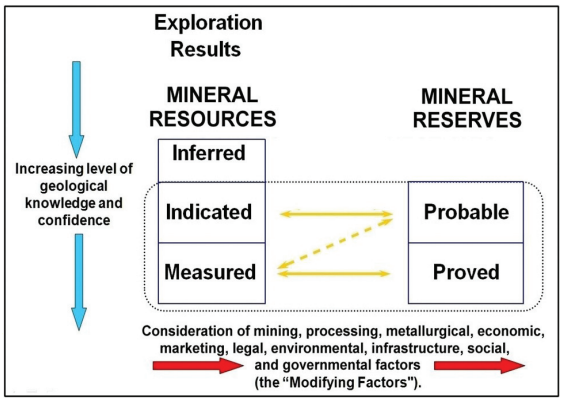In a bid to spur private investment in India’s mining sector, representatives of Vedanta Group pushed the Mines Ministry to consider the adoption of Joint Ore Reserve Committee (JORC) classification, as opposed to the currently used United Nations Framework Classification (UNFC).
A Mineral is any substance occurring naturally in or on the Earth, in or under water or in tailings, residue or stock piles, having been formed by or subjected to a geological process and includes sand, stone aggregates, gravel, clay, and soil but excludes, water, oil and gas .
|
Status of mining sector in India |
|

CRIRSCO consists of 15 members that comply with the CRIRSCO template. India was admitted to CRIRSCO in 2019 following the recognition of the IMIC as a CRIRSCO-compliant code.
References